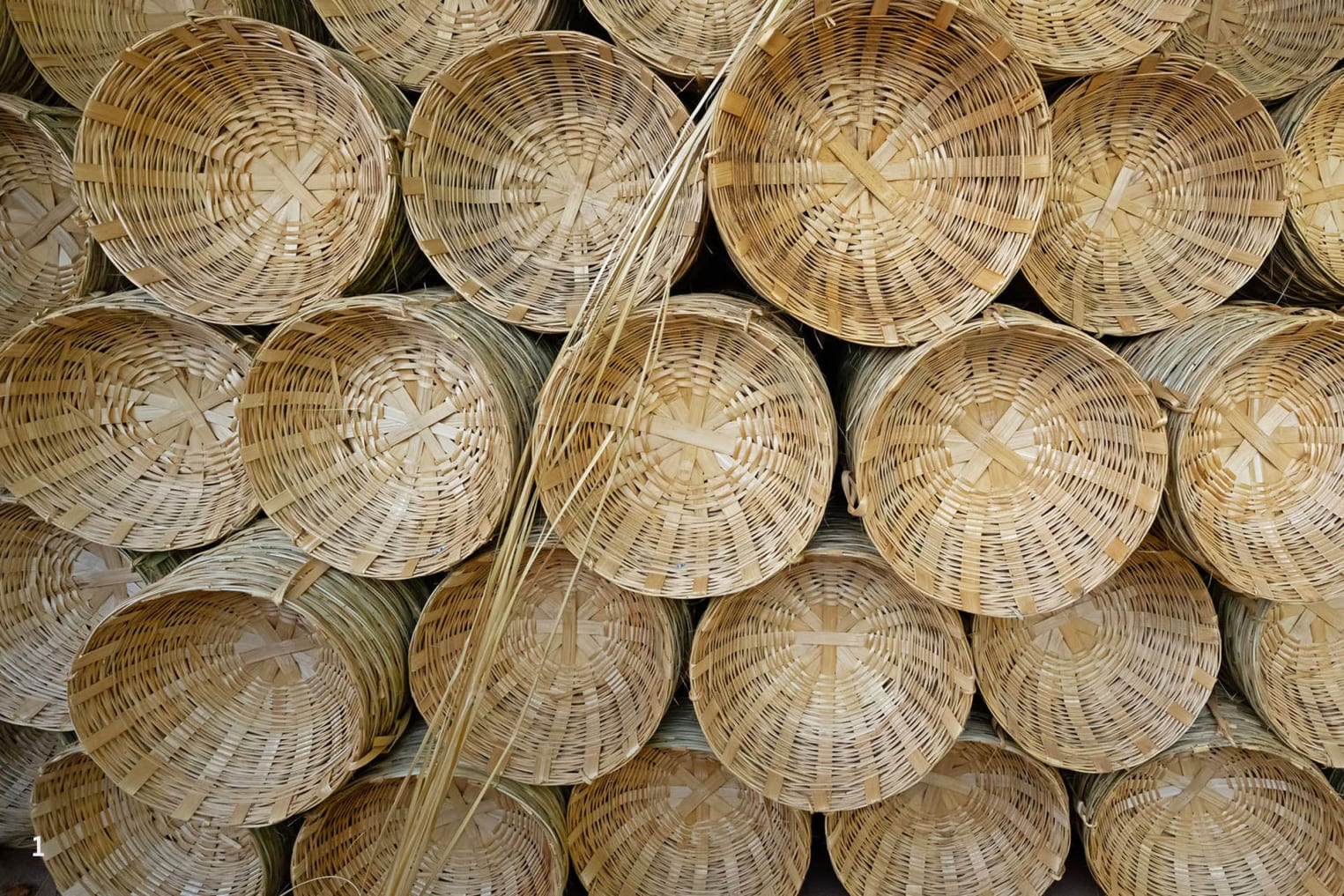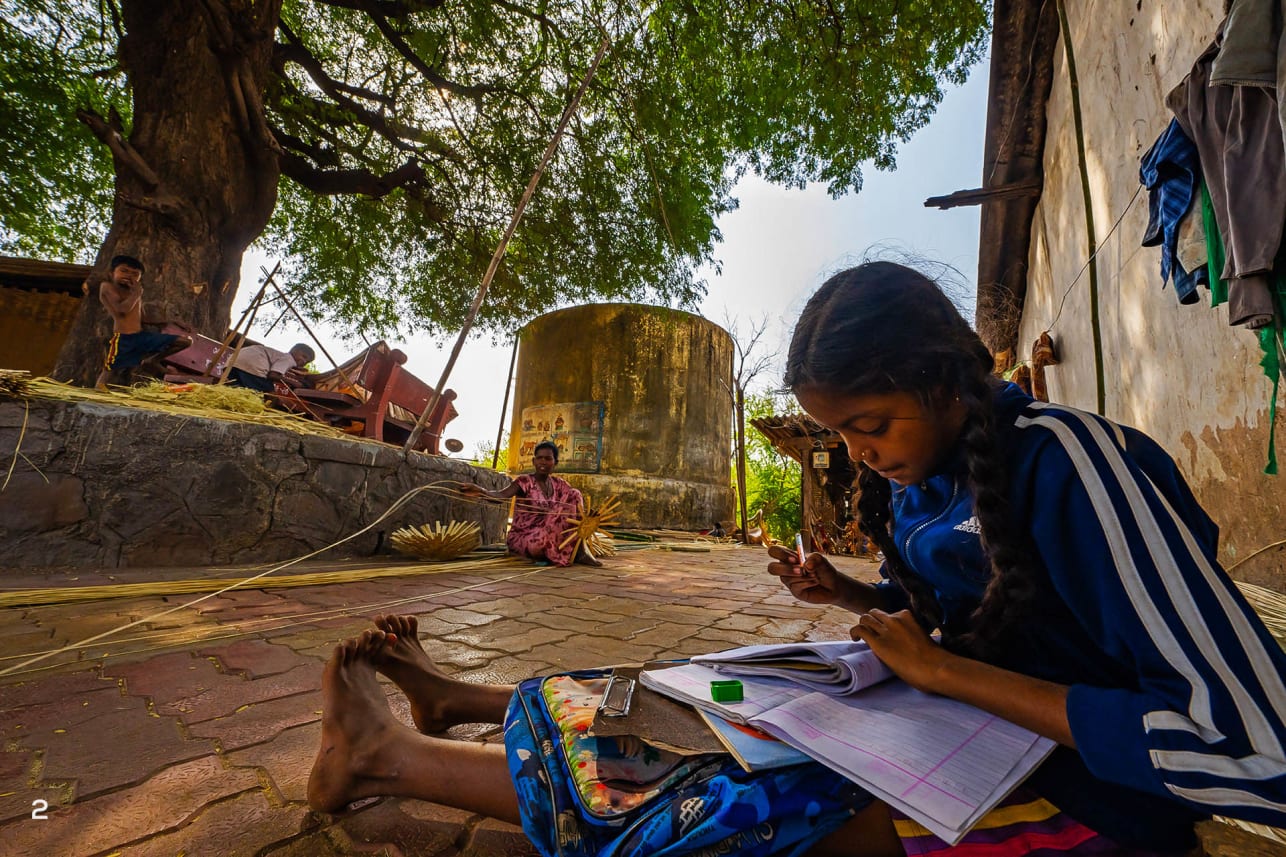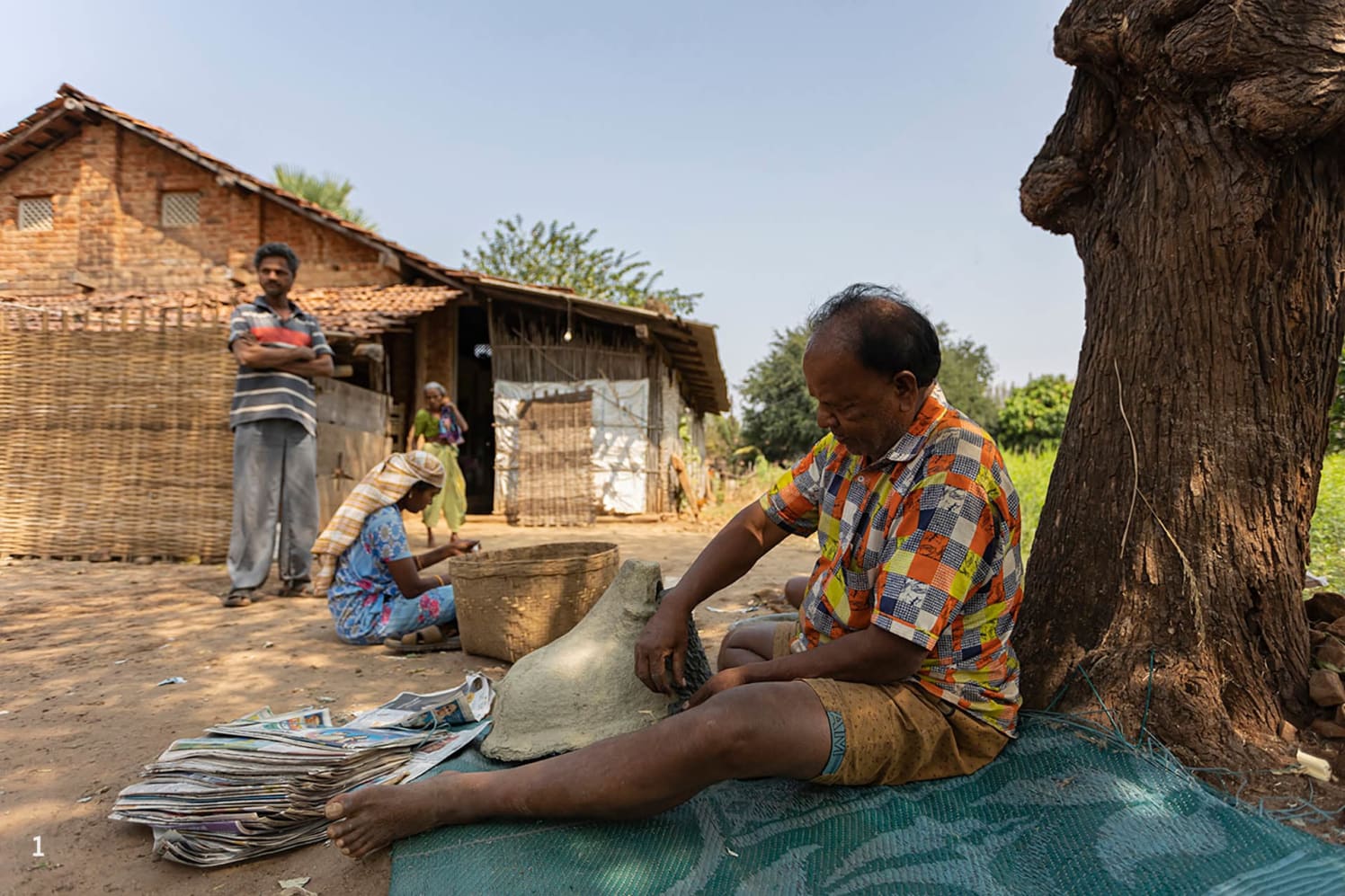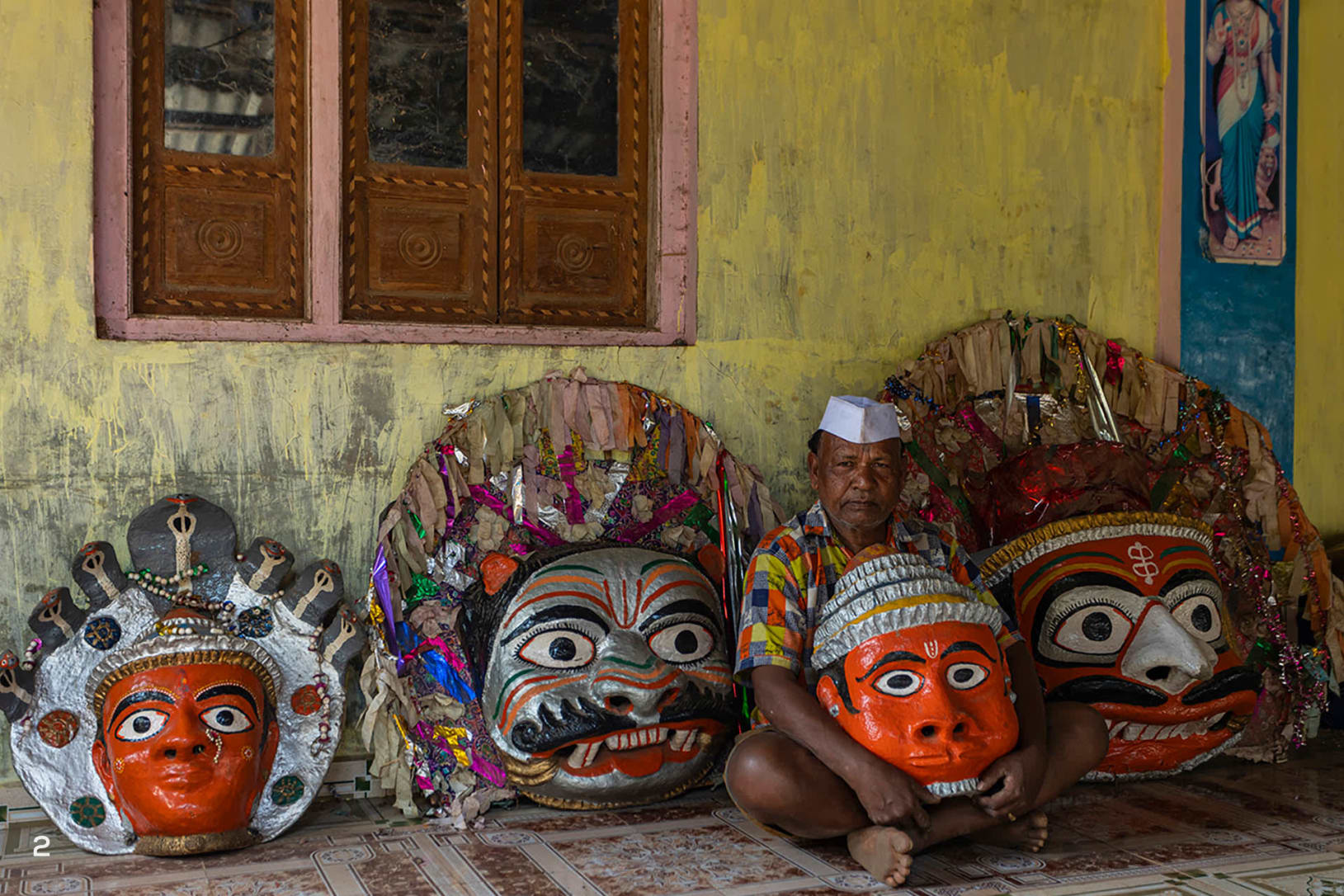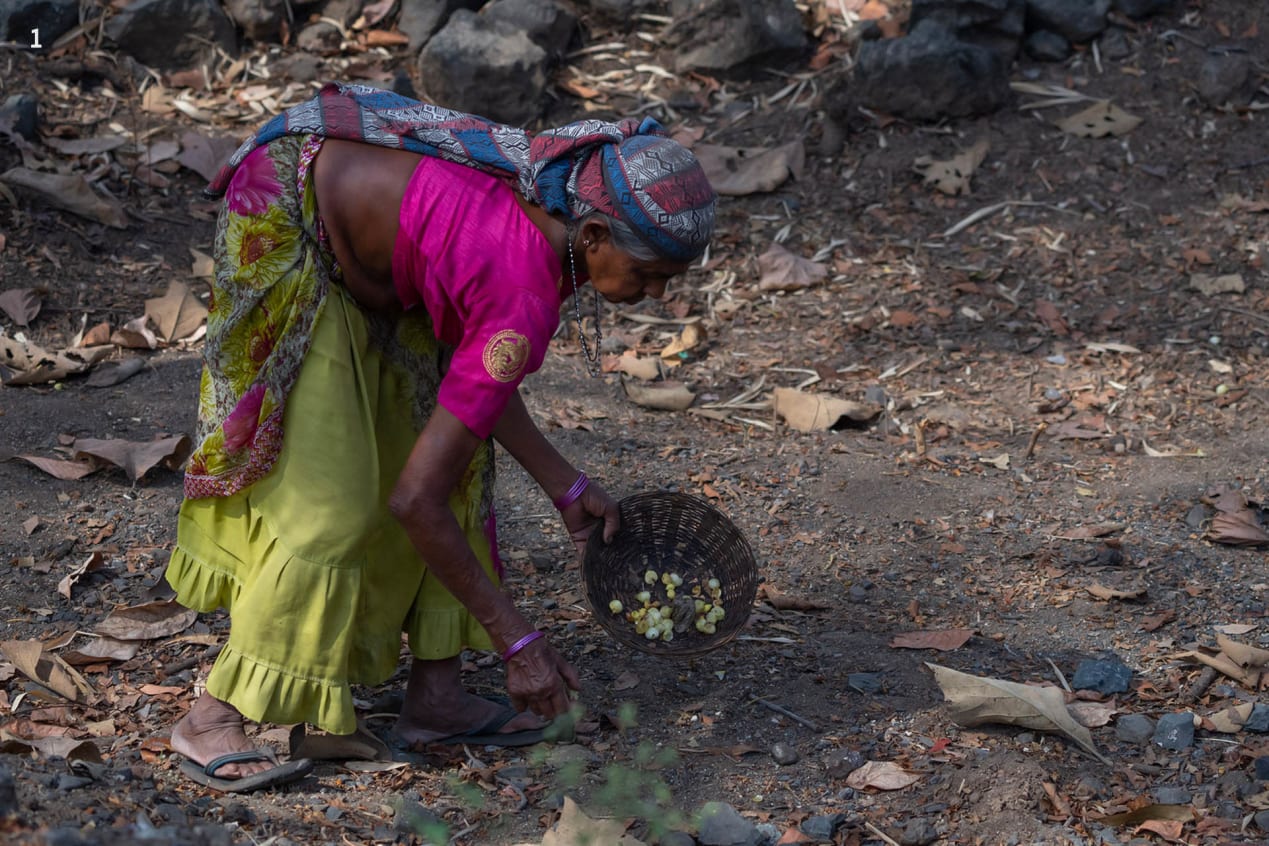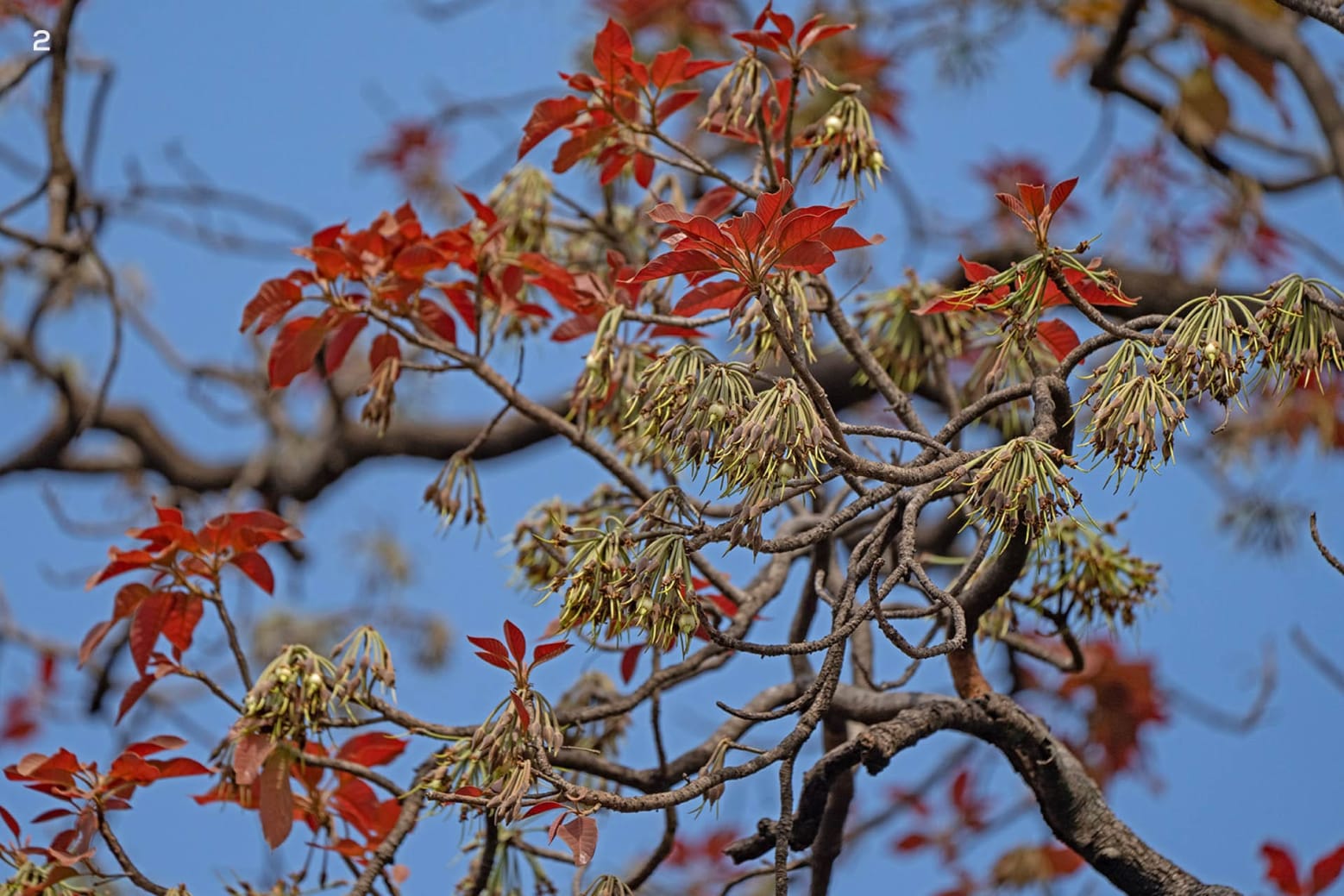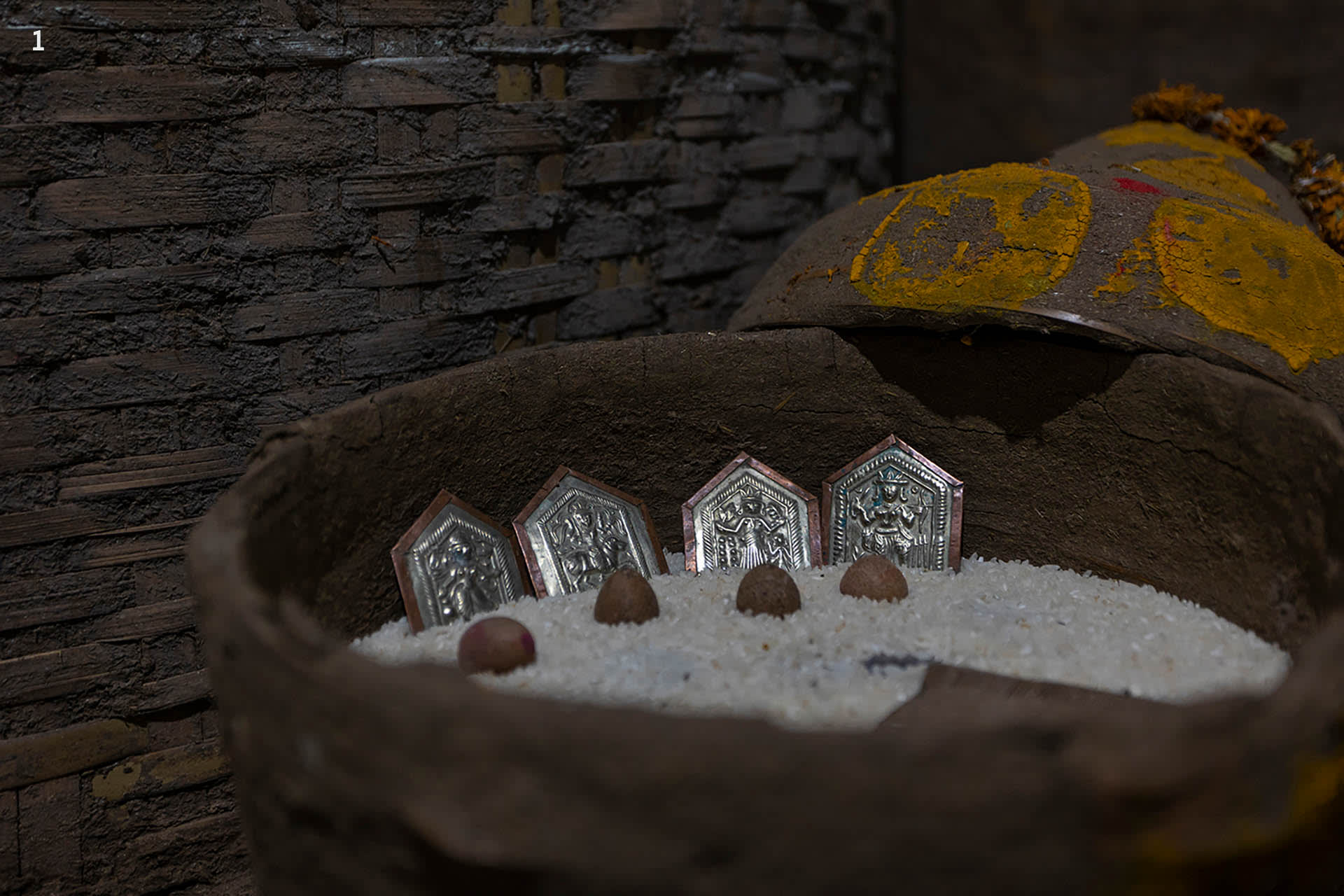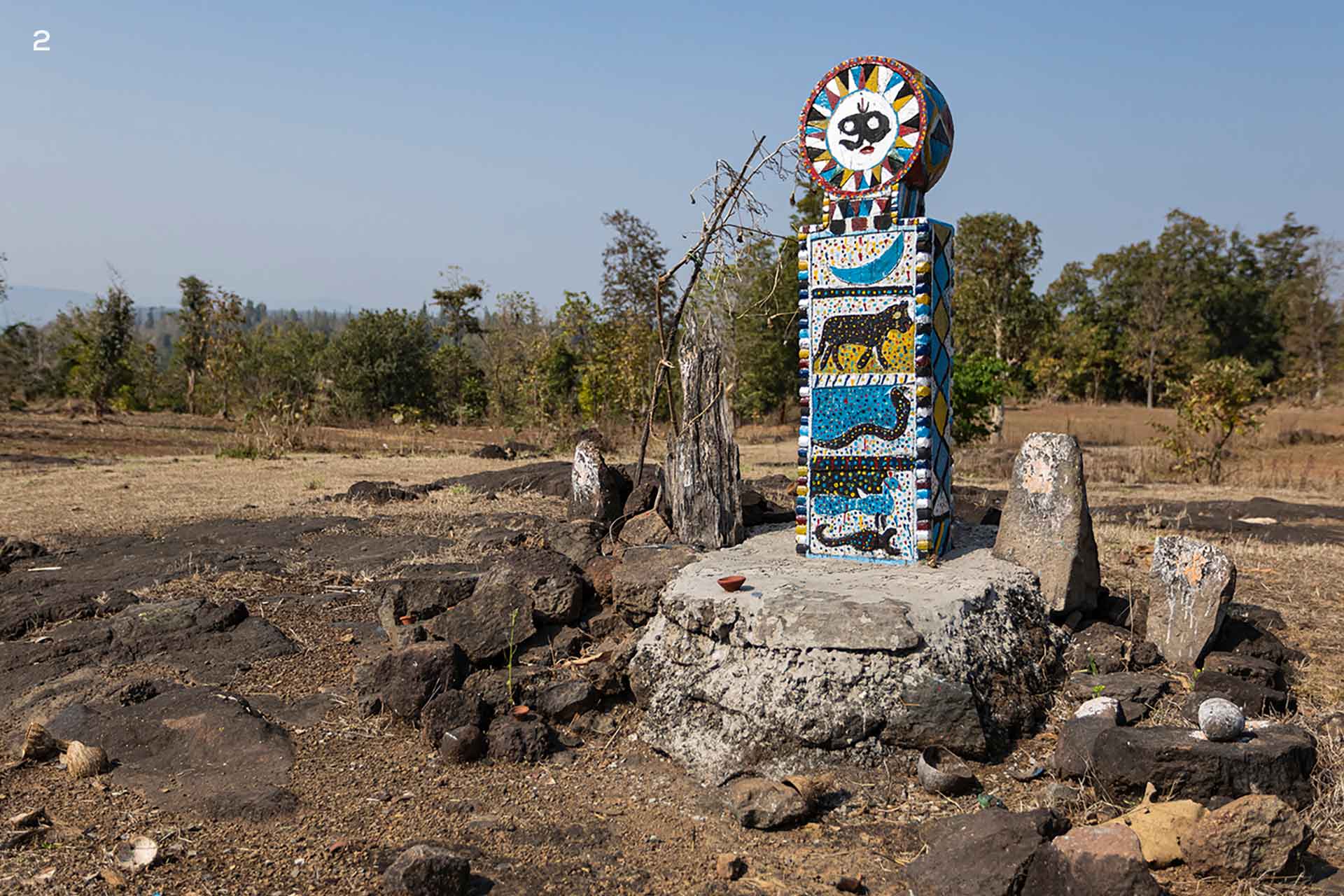 Listen to this article
•
15:34 min
Listen to this article
•
15:34 min
A winding road, flanked by thick forests on either side, snakes past Waghai town in southeastern Gujarat and continues northeast. Tiny villages and hamlets whizz past, blips amidst dense jungles of teak and bamboo. Less than 10 km from Waghai is Chichinagavatha, a small village of just over 100, mostly Adivasi, households.
The village is a maze of narrow alleys except for two wide peripheral roads. The houses are mostly small tenements and huts with sloping sheet roofs. Many have unique walls —thin bamboo mats smeared with wet clay and hardened into sturdy walls. Almost all houses are fronted by raised platforms, covered by an awning, where people sit weaving baskets from bamboo sourced from the surrounding forests. Extensive bamboo forests mean that harvesting has not been a problem. Besides, the community is conscious and protective of the forests. The administration, too, recognises their historical right to the forest, so the Adivasis have wide access, even in the protected areas.
Cover photo: The Kotwalias are skilled bamboo artisans who depend on the forest for resources as they neither own land nor practice agriculture. Photo: Aditya Roy
Dang district is a rarity in the country. Nearly 80 per cent is forested, and a 1952 regulation prohibits tree felling in protected areas; in others, it is heavily regulated by the state. Unsurprisingly, Chichinagavatha and over 300 other villages in the district (nearly 95 per cent are indigenous communities) rely heavily on the forest and the people’s lives are inextricably linked to it culturally and for livelihoods. There are still some hamlets inside the forests that have not yet been relocated. The forest has very few predatory animals. Even leopards, the only big cat here, share a largely amicable relationship with the residents and sometimes give birth inside the nearby sugarcane fields.
“Our ancestors subsisted on the forest,” says 22-year-old Preeti as she leads the way to a cluster of houses where she and her in-laws live. “We never owned any agricultural land; still don’t. For generations, our main occupation was weaving baskets. My grandparents and parents have both done it,” she says. She belongs to the Kotwalia tribe, historically the most economically marginalised of the five main Adivasi groups (Bhil, Varli, Kunbi, and Kokna are the others) of Dang. Many of her community work as labourers in the highly exploitative sugar industry in the area.
Preeti’s parents, wanting a better life for her, sent her to school despite their meagre earnings, making her the first generation to finish class 10. She then chose to continue her ancestral legacy of basketry but upskilled with Ahmedabad-based NGO Eklavya Foundation at their Waghai workshop. The NGO trains local people to develop and make different products besides baskets (including souvenirs, household articles and furniture, with greater market demand) from locally available materials. “Now I have work throughout the year,” she says. Her husband, Salim Ganvit, works alongside her in the same workshop. Together they earn enough to send their daughter to the local school and have bought a second-hand car to commute to work, certainly a step up economically from their parent’s generation.

The communities in Dang, especially the Kotwalias, depend heavily on the forest since they have historically not owned land or practised agriculture. “We harvest bamboo to make baskets (for personal use and selling), other household articles, and even to make our walls. We get wild greens, mushrooms and tubers for food, firewood for cooking, fish from the rivers — the forest sustains us,” Preeti says. Others in the village talk about midnight forays into the forest to collect honey and of making toys, souvenirs, and household articles of dry wood, bamboo, and rhizomes.
At the Wednesday weekly market in Waghai, the wares on display are mindboggling. There are fruits, vegetables, spices, groceries, colourful toys, clothes, household utensils, and furnishings, but also an incredible variety of forest produce. Wild greens, ferns, tubers, roots, wild turmeric, mushrooms, shoots, dried herbs, flowers with medicinal properties, and more are sold here. Aditya Roy, a biologist who is also involved with Eklavya Foundation) tells me that the produce in the market varies with the seasons. “In March-April, it is flooded with mahua flowers collected from the forest”. Just as in large parts of Central and North India, mahua flowers are a principal ingredient for making a special country liquor.
(1) A bamboo basket layered with mud and dung is kept in the granary. These baskets are filled with rice and small silver etching of gods and goddesses. (2) Nature veneration, symbolised here by a stone deity depicting the sun, moon, tiger, snake, peacock, and scorpion, is an important part of the Kotwalia belief system. Photos: Aditya Roy
The community’s existence revolves around the forest, and people regard it with respect and affection. There are also several myths and legends attached to the forest. Dang is considered Dandakaranya from the Ramayana, so references to Hanuman’s birthplace and Shabari’s abode abound. Outside the village are a set of five vertical stones or planks called Vagdev (forest deities) carved with five colourful hierarchical figures — sun, moon, tiger or leopard (jungle king), peacock, and snake (protection against venomous bites). Vagh Baras, celebrated around Diwali, is a day to worship these deities. There are also deities inside the forests: arjuna (Terminalia arjuna) trees, for instance, usually the oldest, are designated as Sadad Devi and worshipped on special days. Dang also has five ceremonial kings (with hereditary lineage) recognised from colonial times. These Bhil kings still receive a small pension from the government and are venerated during Holi.
By evening, we are back in Chichingavatha for a meal. The narrow alleys are lit by intermittent pools of light from front yards. A blazing bonfire attempts to stave off the chill in the air. “Fallen wood from the forest is used as firewood; it could sometimes be from teak trees, possibly the most expensive firewood,” Roy remarks. But for indigenous communities, it is what’s freely and readily available to them. We feast on a simple meal of rice flour rotis, rice, and a spicy country chicken curry with wild greens steamed under a thick layer of palash (Butea monosperma; flame of the forest) leaves. It is redolent of the forest, and the flavours stay with me long after I have left the area




